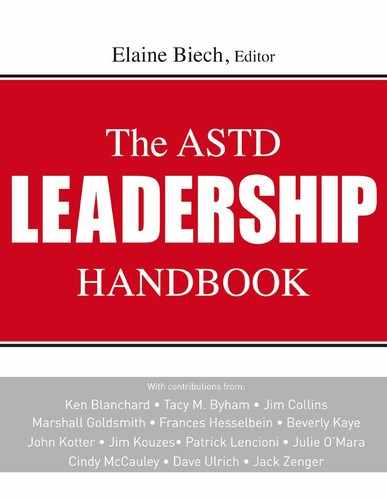 Section IV
Section IV
Contemporary Leadership Challenges
There is certainly no shortage of leadership challenges today. Indeed, an entire handbook could have been written based on them. We have elected to include chapters on current challenges for which there are organizational success stories with validated and implementable solutions. So in the next five chapters, you won’t be surprised to see the authors exploring these challenges—your organization may be facing them, too:
- How will leaders need to change to lead the workforce of the future?
- How can leaders become more globally savvy?
- How can organizations address the challenges women employees face today?
- What strategies can leaders use to guide, develop, and coach the multiple generations in today’s workforce?
- What competencies do leaders need to achieve their organization’s diversity vision?
Of course, these topics aren’t surprising—it is time that leaders addressed them. But there are also other concerns down the road that need leaders’ attention. Where to next? What can the leaders of the next 10 to 20 years expect as they guide the workforce of the future? Events throughout the world during the past couple of years have demonstrated that every successful organization is likely to face challenges that may threaten its survival.
There certainly is no shortage of advice. Turn to the chapters in the first three sections of this handbook, and you will find the authors advising, warning, and pleading for leaders to address key dynamics that affect organizational effectiveness, longevity, and financial performance. So, if leaders have not done so already, they need to immediately tackle the topics explored in this section, so they can move on to the more difficult issues that will soon come their way in this ever-changing, increasingly complex world.
In chapter 24, “Leading the Workforce of the Future,” Frances Hesselbein, president and CEO of the Leader to Leader Institute, explains how the competencies and attributes that will be needed to lead the workforce of the future are changing.
In chapter 25, “Globally Savvy Leaders,” Stephen Rhinesmith, one of the world’s leading experts on global leadership, lays out a nine-step plan a leader can take to become globally savvy. He challenges leaders to rise to a new standard of behavior—to have the empathy, compassion, and capacity to balance achieving financial and organizational objectives with the need to develop collaboration around the world.
In chapter 26, “Women in the Lead,” Marian Ruderman, a senior fellow and director at the Center for Creative Leadership, encourages organizations to find ways to strengthen the development of women leaders. She presents a framework that incorporates the unique needs of women and explains how the principles of leadership development can be adapted to meet them.
In chapter 27, “Leading Across Generations,” Joanne Sujansky discusses key findings from her recent book Keeping the Millennials for addressing the challenge organizations are now facing with four diverse generations in the workplace. She explains how to foster communication, build cross-generational teams, and implement other strategies for working effectively with multiple generations.
In chapter 28, “Leading for Diversity,” Kay Iwata, Juan Lopez, and Julie O’Mara—a team of diversity experts with more than 75 years of experience between them—explore the key competencies needed to encourage diversity and inclusion that are summed up by the acronym P-O-W-E-R: proactive advocates of diversity, optimum people developers, willing innovators, exemplary values-based decision makers, and results through people. Leaders who have these competencies are often described as authentic and committed.
